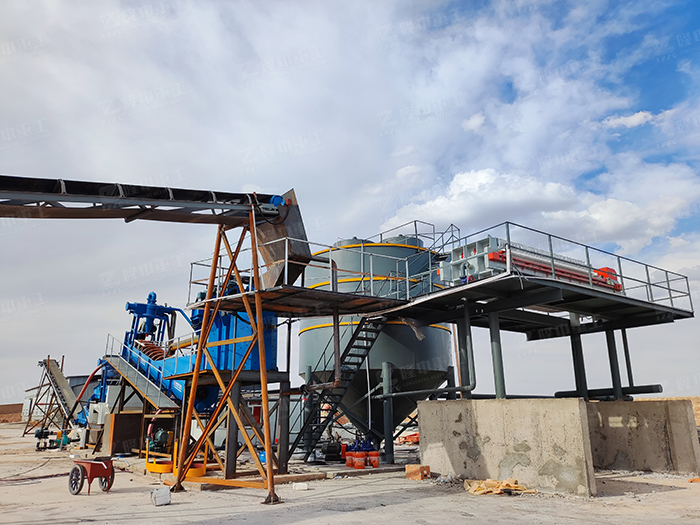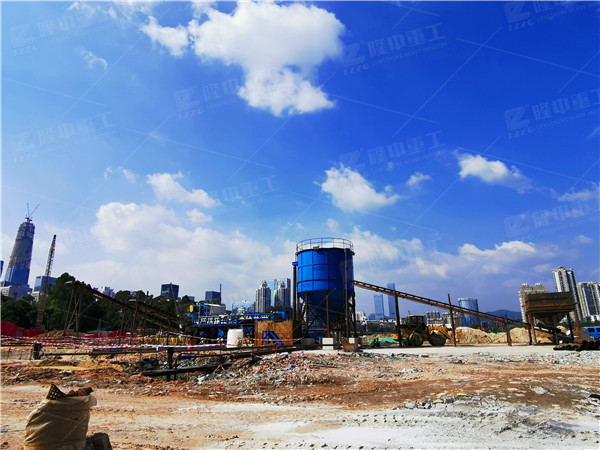Cement Kiln Treatment of Waste Incineration Fly Ash Technology
 January.21,2021
January.21,2021
Abstract
Cement kiln co-processing waste incineration fly ash refers to the use of pre-treated fly ash as a raw material into the cement production process, which replaces part of the cement raw materials and effectively removes the dioxin enriched in the fly ash. Organic pollutants have realized the resource disposal of fly ash. Since fly ash contains a large amount of Cl- and heavy metal elements, in order to avoid affecting the cement production process, it must be pretreated. Based on this, this article mainly analyzes and discusses the pretreatment technology of cement kiln co-processing waste incineration fly ash.
The harmless disposal methods of domestic waste are mainly divided into landfill, incineration and composting. Landfill will occupy a lot of land resources. With the increase in land prices, urban environmental protection, landfilling becomes no longer economical and safe, and more and more cities are considering waste incineration.
Current Status of Disposal Methods of Fly Ash from Waste Incineration
At present, the commonly used disposal methods for waste incineration fly ash include stabilization technology and resource utilization technology. The stabilization technology mainly includes cement solidification, melting solidification, chemical stabilization, and the extraction of heavy metals by acids and other solvents.
Among them, the cost of cement curing is relatively low, it has considerable tolerance to changes in the chemical properties of fly ash, and the technology is mature, and the equipment is simple; melting and solidification can achieve the decomposition of dioxins without the occurrence of heavy metal dissolution; chemical agents are stable The extraction method of heavy metals by chemical and acid and other solvents can reduce part of the investment and operating costs without changing the physical state of fly ash, and also does not cause heavy metal leaching.
Fly ash resource utilization includes the production of building materials, such as ceramics and glass; used for roadbed or dam construction, mainly to replace part of the sand as a filling layer, or mix with cement to replace part of the cement to produce a cement solidified body as a road support layer , But it is very easy to pollute the soil and groundwater; because fly ash contains certain elements such as K, P and Cu, it can also be used to treat acid soil.
The main advantages of cement kiln co-processing waste incineration fly ash
1) Replace some raw materials
Since the main components of waste incineration fly ash are similar to the raw materials required for cement production, it can be used to replace part of the raw materials to burn cement clinker.
2) It can effectively remove organic pollutants such as dioxins
The temperature in the cement kiln is relatively high, the flame temperature is 1700~1900℃, the large precalcining kiln can reach 2100℃, and the material temperature also reaches 1450℃, which is higher than the 1100℃ required for hazardous waste incineration.
3) Reduce the emission of acid harmful gas
The alkaline atmosphere in the cement kiln is conducive to the adsorption of acid gas, especially the stable Cl-containing organic matter, which has a strong neutralization effect on SO2, HCl and HF, effectively inhibits the emission of acidic substances, and facilitates the purification of exhaust gas .
4) Minimize the pollution of heavy metals
5) Reduce fly ash disposal costs
Waste incineration fly ash washing pretreatment technology
The Cl- content in waste incineration fly ash in most areas of my country is between 7.41% and 15.21%. If it is directly used as a raw material for the cement industry, it is very easy to cause kiln system ringing, balling and preheater blockage accidents, affecting equipment Operation rate and cement clinker quality. In addition, in my country’s GB175-2007 “General Portland Cement” standard, “It is allowed to add ≤0.5% of grinding aids in cement production and the chloride ion content in cement must be ≤0.06%”, so before co-processing , The Cl- content in fly ash must be controlled. A large number of studies have shown that water washing pretreatment technology can well remove Cl- in fly ash.
The researchers found in the study of Cl- in the water-washed incineration fly ash that when the water-cement ratio is 8:1, the elution rate of Cl- tends to be stable. When the washing time is 10min, the washing temperature is 50℃, and the washing time is 1 time , The removal rate of Cl- is over 93.71%. Ma Baoguo and others compared the Cl- and sulfur removal effects of waste incineration under different washing conditions. The results showed that the water washing method can effectively remove the Cl- impurities in fly ash without causing calcium and silicon in fly ash. It is determined through experiments that when the water-cement ratio is 10:1 and the washing time is 10min, the Cl- content in fly ash drops to 0.76%, and the washing effect is relatively economical. As the water-cement ratio increases to 20:1 And 30:1, the Cl- content in fly ash dropped to 0.71% and 0.68%, respectively, without significant changes.
Researchers have studied the effect of washing conditions with different water-cement ratios on the Cl- elution efficiency of incineration fly ash. The results show that when the water-cement ratio is greater than 4:1 and the washing time is 10 minutes, the washing time is 1 time. The elution rate of Cl- in ash is as high as 93%. The washing time, temperature and water washing steps have little effect on the elution effect of Cl- in fly ash, and the water-cement ratio is the most important factor affecting the elution effect of Cl- in fly ash. The leaching concentration of Pb, Cd, and Ni in the washed fly ash is significantly reduced after sintering, and the leaching concentration of various heavy metals can reach the corresponding control standards at the sintering temperature of 800℃.





